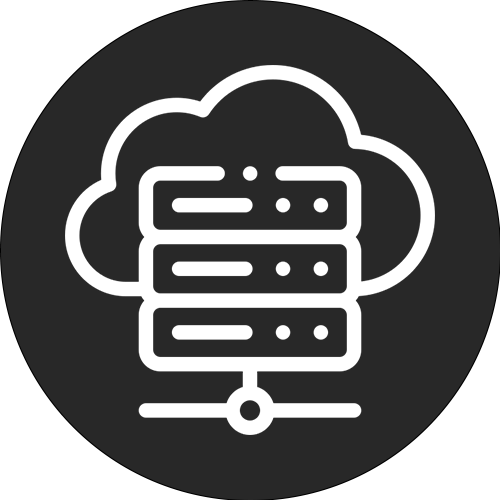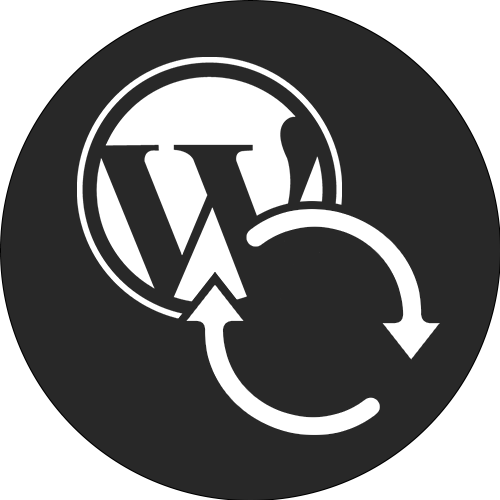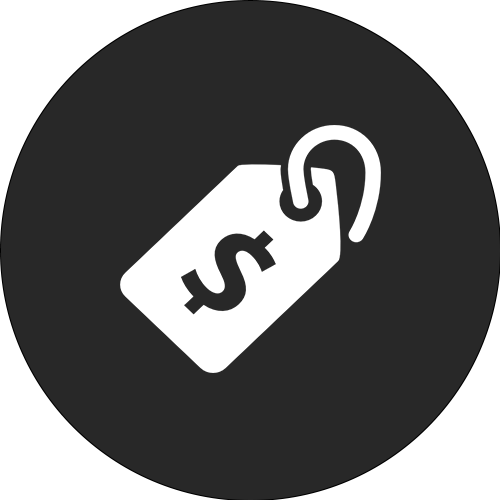Keeping up with the recent content of your beloved websites can be a challenge. Even if you use bookmarks and favorites, it takes a lot of time to visit each website individually to check for new content. With WordPress, you can solve this problem.
Using RSS feeds makes receiving updates a lot easier. By signing up once for a website's RSS feed, you automatically receive all future updates. This also applies to WordPress websites.
You can receive notifications via email or phone, depending on the feed reader you use. Moreover, there are WordPress RSS feed plugins available that allow you to collect all this content on your own website.
This article discusses the meaning and importance of RSS. It also looks at how RSS feeds work in WordPress. We show how to enable or disable them, how to check if they are working properly, and we discuss some plugins that add additional features.
Getting started with WordPress!
What is WordPress (and why is it essential)?
WordPress is a content management system (CMS) that allows websites and blogs to publish their latest content in a user-friendly format. This content can include the full article or a summary, along with important details such as the publication date and author.
Using your WordPress RSS feed, people can subscribe to collect content from your website, including that of other websites.
One comparison you can make is tracking WordPress websites, where you receive notifications of new content on different websites in one place.
In 2012, Google decided to discontinue FeedBurner, a widely used service. Because of this, some people may think that RSS feeds are no longer relevant. Fortunately, there are still many good feed readers available, such as Feedly or The Old Reader. These feed readers are useful for keeping up with news and updates, especially if you have a WordPress website.
You can use Feedly on several platforms, including web, iOS, Android and Kindle. The Old Reader is only available on web, but users have built several apps through the API to use it.
In addition to regularly updating new content, WordPress feeds can also be used for various other purposes, such as automatically importing content from one website to another.
Here at Kinsta, we use RSS feeds in conjunction with the free Slack RSS feed app. This allows us to use Slack as our main communication platform with our remote team members.
Using WordPress, we can automatically categorize RSS feeds into channels, making it easy to stay informed about new content and software updates.
Is there an RSS feed available on WordPress (and how do I find it)?
WordPress automatically creates several built-in RSS feeds for your website. As mentioned earlier, these feeds are usually generated in XML format and a new document is created each time you publish new content.
To view your feed, just add "/feed" to the end of your WordPress website address.
If you have a WordPress website, your feed will automatically be published at a specific URL. For example, if your website is www.document.com, your feed will be available at www.document.com/feed. This also applies to websites on the Kinsta.com platform.
For your categories and tags, as well as comments, feeds are created. This means you can have several other urls that look like this:
In most cases, you can find WordPress' main feed on your website's home page.
How can you check if an RSS feed is working?
In addition to having your own feed on your website, you can also use feeds from other websites in your content.
Before you get started, it is important to validate each external feed. You can do this by using your browser or an online tool.
Try testing the URL of the WordPress feed in your browser
To check the WordPress feed using your browser, simply copy and paste the URL of the feed into the address bar.
You notice that the feed is displayed in the original XML format.
WordPress testing using the W3C Validator
An alternative method of testing the validity of a WordPress feed is to use the W3C Validator. Copy the URL of the feed and paste it into the Validator's input field. Then click the Check button to check the validity.
This page indicates whether the WordPress feed is valid or not.
If you have a WordPress website, you may be given tips on how to optimize your feed for readers.
Make sure you optimize your WordPress RSS feeds to keep your users up-to-date with your content. It is important to maximize the use of RSS feeds so that you get as many subscriptions as possible.
An effective method to achieve this is to display only summaries of your articles in your feed, rather than the full text. This way, you also encourage your readers to visit your website and read the full article there.
You can use WordPress' built-in setting to adjust this. Go to the Settings > Reading section and select the "Add summary for each post in a feed" option.
Using the Category-Specific RSS Feed Subscription plugin in WordPress, it is possible to allow users to subscribe only to specific categories or tags. We will discuss this plugin in more detail later.
If you have a blog with multiple authors, it is also possible to allow your readers to subscribe to their favorite author. This can be done on a WordPress site.
This is what a single author's feed looks like in WordPress.
You can also allow authors to include a link to their RSS feed in their bio or email signature. This can easily be done through WordPress.
4 useful plugins for RSS feeds in WordPress
Although WordPress has standard RSS feeds and a way to display them, plugins offer many more options. Four good options are discussed in more detail below.
1. WordPress RSS Aggregator
With over 60,000 active users, the WordPress RSS Aggregator is the most popular plugin to import RSS feeds on your WordPress website. With this plugin, you can import endless posts, YouTube videos, listings and podcast episodes from different websites. As a result, you will always get new and carefully curated content for your website.
The free version of WP RSS Aggregator allows you to:
The paid version of WordPress also allows you to:
Once you have WP RSS Aggregator installed on your WordPress site, all you have to do is add a feed source and the plugin will do the rest for you.
2. The Feedzy RSS Feeds plugin is an excellent option for WordPress users looking for a way to integrate RSS feeds on their website. This plugin allows you to import and display an unlimited number of feeds. Moreover, you can even use it for automated blogging by publishing selected content from different sources on the Internet.
Some of the essential features available in the free version of Feedzy include:
With the paid version of WordPress, you also get the ability to:
If you have Feedzy installed and enabled, you can go to the Feedzy menu and then go to the "Import Messages" section. From there, click on the "Import messages" option.
It is now possible to add RSS feeds to your WordPress website.
3. RSSImport is a handy tool for WordPress that allows you to import feeds to your website. You can do this through a widget, shortcodes or PHP.
Using this tool, you can experience a lot of flexibility through the available shortcodes. These shortcodes allow you to use different parameters to customize everything to your liking. For example, you can create something similar using this tool:
Use the code below in WordPress to display 25 articles from the Kinsta blog on your website:
[RSSImport display="25" feedurl=""
You can also add PHP code to a template of your WordPress theme, such as sidebar.php or single.php. For example: [RSSImport display="25" feedurl="https://kinsta.com/feed/" use_simplepie="true"]
To display content from your WordPress feed, you can place shortcodes in different places in an article or page.
4. Specific RSS feed subscription by category
The plugin Specific RSS Feed Subscription by Category is different from other plugins. It gives users more freedom to choose what they want to subscribe to, based on your categories. For example, if you publish content in different categories, such as "Aviation," "Renewable Energy" and "Film," visitors can choose to subscribe to all categories or just one specific topic. This plugin gives you more control over offering targeted RSS feeds to your users.
In addition, the WordPress plugin offers the ability to:
After you install the WordPress plugin, you can go to the settings and select the "Category-Specific RSS" option there. Here you can see a list of all available categories. Then you can use widgets, shortcodes or PHP to display your feed menus in different places on your website.
How to disable RSS feeds in WordPress
While RSS feeds can be very useful, you may not be using them or just don't want to spend time maintaining them.
If you want, you can choose to disable the feed from your WordPress website. You can do this by using a plugin or by making adjustments to your current theme.
Make use of a WordPress plugin
A WordPress plugin such as Disable Feeds can be particularly useful to disable all feeds on your website. This plugin automatically removes all RSS, Atom and RDF feeds by redirecting the requests.
However, keep in mind that the plugin has not been updated for three years. Nevertheless, you should have no trouble using it with the most recent version of WordPress.
Disabling feeds only removes the actual feed. However, this does not mean that links to old feeds can no longer appear in your theme, sidebar or footer widgets.
Customize your WordPress theme
Another way to disable RSS feeds in WordPress is to make changes to your current theme's functions.php file. Go to the View > Theme Editor section and look for the functions file in the folders on the right.
Then you can add the code below to the end of the file.
Add the following code to your WordPress theme to disable feeds:
"`php
add_action('do_feed', 'itsme_disable_feed', 1);
add_action('do_feed_rdf', 'itsme_disable_feed', 1);
add_action('do_feed_rss', 'itsme_disable_feed', 1);
add_action('do_feed_rss2', 'itsme_disable_feed', 1);
add_action('do_feed_atom', 'itsme_disable_feed', 1);
add_action('do_feed_rss2_comments', 'itsme_disable_feed', 1);
add_action('do_feed_atom_comments', 'itsme_disable_feed', 1);
“`
Be sure to save your changes after you are done.
Brief summary
WordPress has an RSS feed available by default, and it's easy to find. Using additional plugins, such as Feedzy RSS Feeds, RSSImport, Category-Specific RSS Feed Subscription and WP RSS Aggregator, you can gain even more control over your RSS feed.
As indicated earlier, RSS feeds remain extremely useful in various situations, so they are certainly not obsolete!
Still have questions about the RSS feed plugins we have on our list and want to know how best to use them in WordPress? Then let us know in the comments below!
Optimize the performance of your WordPress website and save time and money with our managed WordPress packages. Each package includes $275+ of enterprise-level integrations, including a powerful CDN, DDoS protection, malware and hack mitigation, edge caching and Google's fastest CPU machines. You can get started right away without long-term contracts, and we offer migration assistance and a 30-day money-back guarantee.
Explore our assortments or contact our sales department to find the perfect package for you. With us you will find the ideal solution for your WordPress website.
Matteo Duò is an expert on WordPress and serves as editor-in-chief at Kinsta. He also offers his services as a content marketing consultant for developers of WordPress plugins. Want to learn more about Matteo and his work? Then follow him
Take advantage of a special promotion now: get 4 months of free WordPress hosting to make sure your websites are ready for the large influx of users during the holidays.
Topics related to WordPress
Discover 7 great WordPress slider plugins to create impressive websites
Discover more than 40 SaaS products we use to drive our business growth
Comments
I was actually looking for the answer to the question of who subscribed to my publications via an RSS feed. Unfortunately, I could not find that information. Where can I find this?
Hey Hans,
People who subscribe to an RSS feed on WordPress cannot be followed automatically. It is a public link that anyone can subscribe to without restrictions.
Hi, I disabled the rss feed from my WordPress website about a year ago. Now I am wondering if an rss feed could be useful for a web shop. Would activating the rss feed possibly be beneficial for my website's SEO?
A WordPress RSS feed can be very useful for an online store. It actually has no negative aspects and it can give other parties insight into the products you offer, which can lead to more visitors to your website.
Post a comment Delete last comment
Note
First name
WordPress is a much
By submitting this form you consent to the processing of your personal data according to Kinsta's privacy policy, including the possibility of data transfer to the United States.
By signing up, you agree to receive information from Kinsta about our services, events and promotions. You always have the option to unsubscribe by following the instructions found in the messages you receive.
Sign up for our WordPress newsletter and stay up-to-date on the latest in web development, including trends, frameworks and programming languages.
Sign up for our newsletter on the Kinsta Hosting platform. Discover different resources and information about our company. Compare Kinsta's capabilities with other hosting providers. All rights reserved © 2023 Kinsta Inc. Kinsta® and WordPress® are officially registered trademarks. Please refer to our website for legal information.












